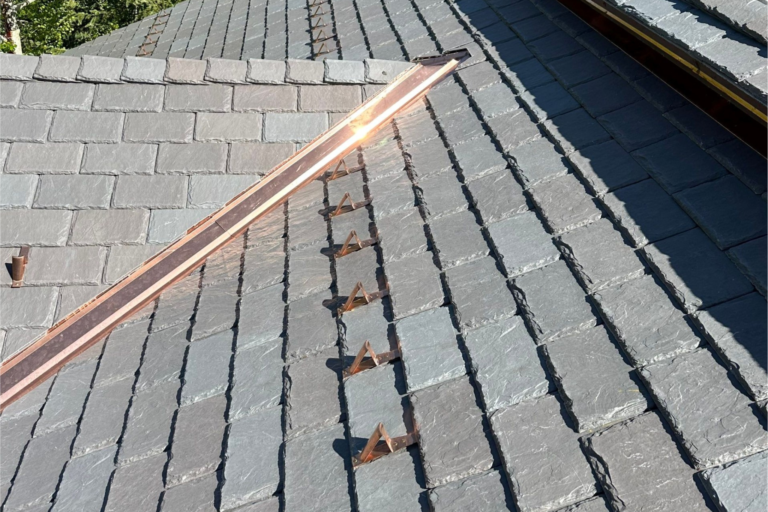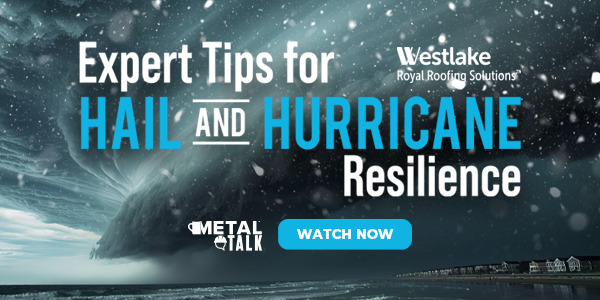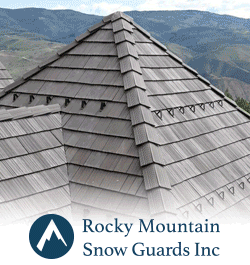How long will your roof last?

By J&K Roofing.
Compare the lifespan of your roof to other roofing materials.
Roofs are a long-lasting investment that can improve the value of your home. However, a roof will endure harsh weather and elements that will wear it down. All roofs will eventually need replacement, but each roof type has a different longevity. The roof material, climate and storm damage will all play a part in when the roof needs to be replaced. Our experts here at J&K Roofing will explain how long you can expect different roofs to last, especially in the Colorado area.
Asphalt shingles: 15-30 years
Asphalt shingles are one of the most common roofing materials due to their affordability and ease of installation. They come in a variety of styles and colors, making them a versatile choice for many homeowners. Standard asphalt shingles typically last between 15 to 20 years, while higher-quality Class 4 impact resistant shingles can last up to 30 years. However, in Colorado and similar places, the lifespan of asphalt shingles is reduced due to hail damage and severe weather conditions.
Wood shakes: 25-40 years
Wood shake roofs offer a natural, rustic appearance that many homeowners find appealing. Made from cedar, redwood or other durable woods, these shingles are thicker than asphalt shingles and provide a higher level of insulation. Despite their charm, wood shakes are now becoming increasingly uninsurable due to their susceptibility to fire and weather damage. Additionally, frequent hailstorms and moisture issues can shorten their lifespan to the lower end of the expected range.
Metal roofing: 30-70 years
Metal roofing is known for its exceptional durability and longevity. The two main types of metal roofing used for residential properties are standing seam metal roofing and stone-coated metal roofing. Materials such as steel, aluminum and copper can withstand harsh weather conditions, making them ideal for areas like Colorado. Standing seam metal has a varying lifespan since the gauge of metal used can affect how long the roof lasts. Stone-coated steel metal roofing is made from steel sheets and then coated with stone granules. High-quality stone-coated steel roofs like Decra can last 50-70 years with proper maintenance. They have the highest rating for resisting hail impact.
Slate: 50-75 years
Slate roofs are renowned for their beauty and longevity. Made from natural stone, slate tiles are highly durable and can last anywhere from 50 to 100 years with proper care. Slate is highly resistant to fire, rot and insects and it can withstand severe weather conditions. However, the weight of slate tiles requires a strong supporting structure, and the installation process is complex and expensive. Slate roofs can still face challenges due to the freeze-thaw cycle, which can cause cracking over time.
Concrete roofing tiles: 40-50 years
Concrete roofing materials are designed to resemble various roofing materials, including shake, slate and clay tiles. These tiles are known for their durability, aesthetic appeal and versatility in replicating the appearance of natural materials while offering the benefits of concrete. They can last 40-50 years with proper maintenance. If you’re looking for a roofing material that resembles slate but offers enhanced durability and customization options, Bartile concrete tiles are an excellent choice.
Composite roofing: 40-50 years
Composite roofing materials, such as DaVinci, mimic the look of natural slate or wood shake while offering enhanced durability and resistance to the elements. Made from a blend of materials like fiberglass, resin and recycled plastics, composite shingles are lightweight, environmentally friendly and highly durable. They can last between 40 to 50 years and are designed to withstand severe weather conditions, making them a suitable choice for Colorado’s climate and areas that experience similar weather. Composite roofing offers the aesthetic appeal of traditional materials without the associated maintenance and longevity issues.
Unique weather challenges for roofs
INESRT IMAGE 2
Severe weather conditions often prevent roofs from reaching their full lifespan. Frequent hailstorms, heavy snowfall and extreme temperature fluctuations significantly impact the durability of roofing materials. Hail can cause immediate damage, while freeze-thaw cycles contribute to long-term wear and tear. Given these challenges, it’s crucial for homeowners in areas that experience severe weather to select roofing materials designed to withstand these conditions, like Class 4 impact-resistant shingles such as Owens Corning, GAF, Malarkey, CertainTeed and IKO.
Regular maintenance, timely repairs and proactive measures can also help extend the lifespan of your roof, ensuring it continues to protect your home effectively. After a storm, inspecting your roof for damage is essential, as hail and wind can cause significant harm. Acting quickly ensures that any damage is addressed before it leads to more serious issues. Typically, you have up to one year to file an insurance claim for storm damage, although some insurance companies allow up to two years.
Insurance and roof replacements
Insurance companies are increasingly scrutinizing aging roofs. Due to the higher risk associated with older roofs and the recent trend of more frequent and severe weather events, insurers are adjusting their policies. They now view older roofs as a significant risk factor, which can lead to higher premiums or even loss of coverage.
Taking a proactive approach to maintaining your roof can help you keep your insurance coverage and avoid unexpected price increases. Regular inspections and timely repairs are key. A certified contractors’ expertise in navigating insurance requirements ensures you get the best coverage and protection for your home. They can help you understand your policy, file claims promptly and make necessary repairs to keep your roof in top condition.
Can you install a new roof over an old one?
Some homeowners may consider installing a new roof over an existing one to save time and money. However, building code regulations prohibit this practice. Adding a new layer can trap heat and moisture, leading to premature failure of the new roof. Additionally, the added weight can be too much for the existing structure to support safely. It’s always best to remove the old roofing material before installing a new roof.
Time to replace your roof?
If you suspect your roof is nearing the end of its lifespan or has suffered storm damage, don’t wait until it becomes a more significant issue. Let a professional assess your roof’s condition and help you determine the best course of action to ensure your home remains protected.
Original article and image source: J&K Roofing
Learn more about J&K Roofing in their Coffee Shop Directory or visit jkroofing.com.





















Comments
Leave a Reply
Have an account? Login to leave a comment!
Sign In